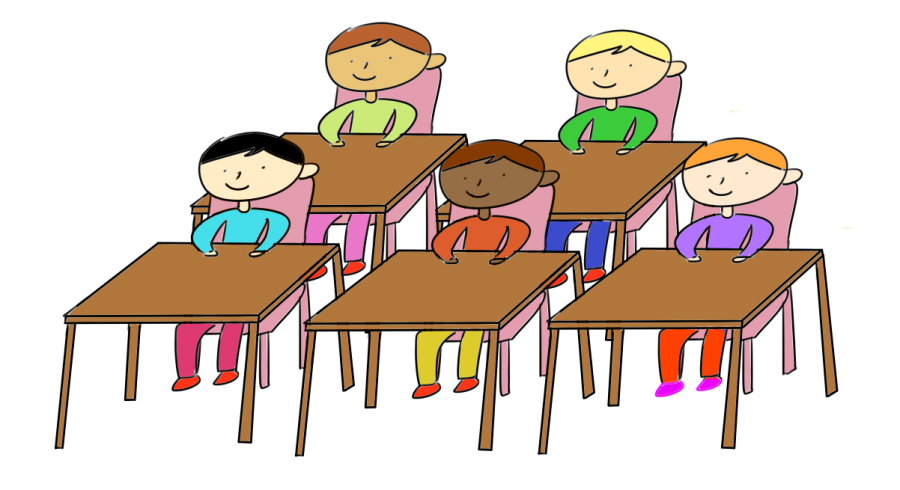Your donation will support the student journalists of The Tide, Richard Montgomery High School's student newspaper. Your contribution will allow us to purchase equipment and cover our annual website hosting costs.
MCPS considers further reducing class sizes
February 15, 2019
In early 2019, the Board of Education asked Superintendent Jack Smith to reevaluate class sizes in MCPS. Smith is set to report his findings to the board by June.
The school system’s efforts at changing class sizes began in 2017, when the MCPS school system set aside $40 million of its budget to reduce class sizes by two students per class. In the 2016-2017 school year, the Department of Education reported that class sizes averaged 20.46 students.
By the 2017-2018 school year, the MCPS’ “Schools at a Glance Profile” reported that high school English classes had decreased to an average of 19 students and other high school classes averaged 20.1 students.
Based on the results of Smith’s current investigation, Montgomery County could also receive up to $5 million more in funding, according to Bethesda Magazine, which would be used to further reduce class sizes. Smith’s proposed 2020 fiscal operating budget also accommodates for growths in staff, allowing for further decreases in class size in the future.
Despite the reported data, actual class sizes vary with the academic level of the class. “20.1 sounds super low,” science teacher Charles Goetz said. “I assume that includes all ESOL and Special Ed classes because they range from like 12 to 16, whereas your higher level classes are often in the 30s.”
“I certainly think that the material I teach is not affected by class size,” Mr. Goetz continued, “but the amount of help I can give to everybody and the amount of even in small groups the amount of time a teacher has divided evenly.”
Smaller class sizes would also mean less time spent grading papers for teachers and more time available for more classroom involvement. “You get more individual attention, you have more time for emailing home and calling parents, or organizing more projects. It’s just a time thing and a money thing, but absolutely, it should be an emphasis. Of course there are a lot of other things that are emphasized, but I think that is a very direct correlation to having a better classroom environment,” Mr. Goetz said.
Many RM students, such as junior Divya Koganti, also support increased funding for class size reduction for similar reasons. “The teacher can focus on more students if they have less people in the class,” Koganti said. “If people have more questions, the teacher can answer them more clearly.”
Koganti also suggested that smaller class sizes would allow teachers to use class time more efficiently. “If you have more students in one class, it can make the class go slower, because you have more projects to present,” she said. “Then you’ll be slower than another class with less people.”
By reducing class sizes, classroom teaching would also feel more individualized for these students, an important goal that has become increasingly harder to attain with overcrowding in many MCPS schools.
While many students agree with further reductions in class size, some also feel that class size does not impact their experiences in the classroom environment. “I’ve read some stuff that says there is no correlation between class size and academic performance,” junior Corinne Foley said. “I think people exaggerate the importance of a small class size.”
Many teachers teach in the classroom through lectures and notes, with less interaction occurring between teacher and students. For many students, the size of the class does not make much of a difference on their education due to this teaching style.
“Class size doesn’t matter that much to me because I don’t feel that I need a lot of personal attention from my teachers,” Foley said. “If I’m struggling, I will go in separately. I would go in at lunch, not bring attention to myself struggling during class.”
Similarly, sophomore Michael Sun said, “The way I learn is I sit in the back and take notes. I don’t really ask the teacher anything, so I don’t really need the teacher. The class sizes aren’t so big that they are going to inhibit any connection.”
Sun also suggested that increasing the class sizes of certain junior and senior-level classes to 60 or 70 students may be beneficial, though also a little unrealistic. “That’s going to prepare you for college classes and prepare you for your experiences beyond school,” he said.
With overcrowding already occurring all over the county, reducing class sizes further may lead to additional problems in staffing and classroom availability. However, it may be an important step to take to alleviate the concerns of students and teachers alike.
“I know that there’s a lot of money in the county, and trying to allocate resources like Chromebooks and things like that are important,” Mr. Goetz said. “But I think it’s a very underrated thing, that if you can make it work, then every class would benefit from smaller class sizes, lowest to highest [academic] level.”
